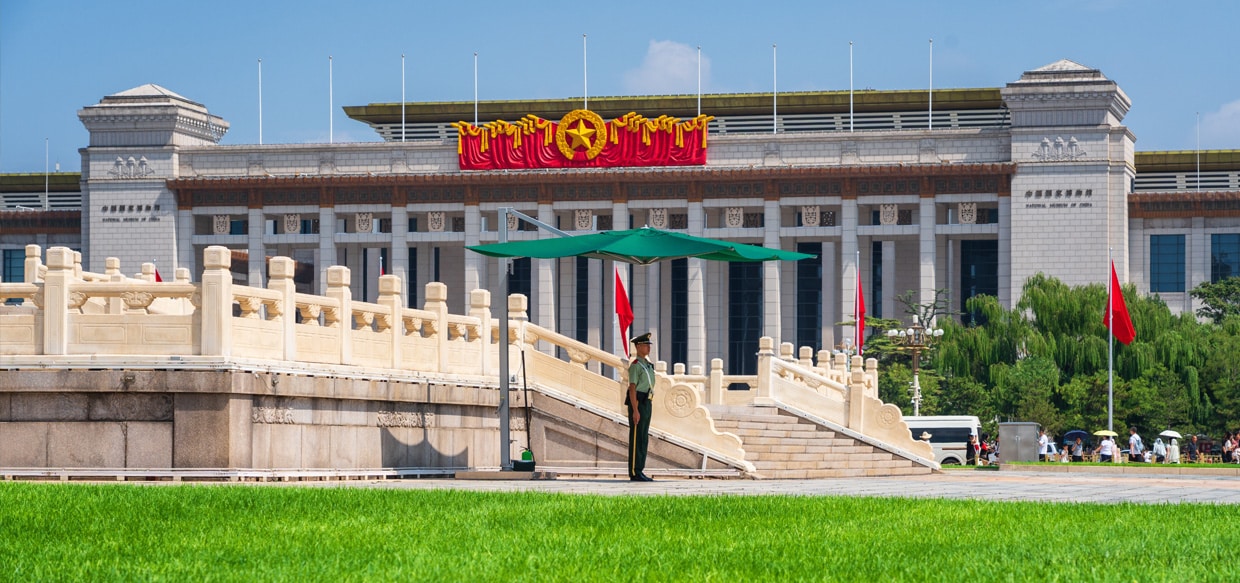
Cuddly, Cutting-edge, Creative: China’s Soft Power Spreading Through Global Brands

At a Crossroads: ASEAN and the Future of Regional Cooperation
Fourth Plenum signals confidence and continuity ahead of Xi-Trump summit in Busan
October 2025

By Alexander Anderson. Based in Beijing and working at Sandpiper’s Government & Public Affairs practice, Alexander has extensive experience in policy analysis and public affairs issues.
The Fourth Plenum of the 20th CPC Central Committee wrapped up in Beijing last week, just as Chinese and US trade teams were preparing for negotiations in Kuala Lumpur, and mere days before both countries’ leaders are expected to meet face to face in Busan.
The timing and choreography are no accident. While President Donald Trump’s visit to South Korea caps off a whirlwind diplomatic victory lap around Asia, President Xi Jinping arrives in the country having concluded his most consequential political meeting of the year, signalling confidence both domestically and internationally.
Typically held once a year, plenary sessions are closed-door meetings of the Central Committee, convening the three hundred-odd highest-ranking Party members from across the country. Beyond the inevitable personnel reshuffles and questions of Party governance, the latest Plenum was most notable for unveiling a preliminary framework for the upcoming 15th Five-Year Plan, which will run from 2026 to 2030.
A blueprint for the next 5 years
Since their very inception, five-year plans have served as foundational roadmaps for Beijing’s policy direction, defining everything from industrial strategy to social governance. From last week’s official communiqué, it’s clear that the leadership considers the next five years to be ‘critical’ for China’s long-term development trajectory.
As we inch closer to China’s 2035 milestone for ‘basically achieving socialist modernisation’, the next few years could be a ‘make or break’ juncture for China to decisively transition away from a diminishing, real estate-heavy, debt-fuelled growth model to a ‘new development pattern’ with an ambitious, technology-enabled industrial strategy at its core.
Continuity amid rupture
At first glance, this looks like a radical break from the long progression of five-year plans since Reform and Opening, with their accompanying fixation on chasing headline GDP targets. However, anyone paying attention to China’s policy environment over recent years will have noticed the growing centrality of technology and high-value manufacturing as the proposed new drivers of China’s economy.
Priority areas like ‘new quality productive forces’, which dominated the agenda at last year’s Third Plenum, Central Economic Work Conference, and 2025 Two Sessions, are echoed emphatically in the latest communiqué. The resounding message is one of consistency and continuity. President Xi and the core leadership team are confident in the trajectory they have set the country on and are sticking to the plan.
Priority areas
The communiqué expands on twelve priority areas – ranging from green transition to modernisation of the armed forces. Building ‘a modernised industrial system’ and achieving greater ‘self-reliance in science and technology’ feature as the top two items on the agenda, reflecting the leadership’s understanding of structural challenges that must be overcome at home and abroad. This entails reducing China’s dependence on vulnerable overseas supply chains for its high-end industries.
There is a clear national security element at the heart of this, and a recognition that China is operating in an increasingly turbulent global landscape. The communiqué does not shy away from alluding to ‘choppy waters and dangerous storms’ on the horizon. The long-term goal of building a resilient and sustainable industrial base with innovation and advanced manufacturing at the core will go hand in hand with shoring up manufacturing supply chains and building domestic capabilities. This drive to reduce overseas dependence and promote self-reliance in sci-tech is likely to intensify trade competition, as national security considerations increasingly creep into the industrial and commercial realm.
Pushing at the frontiers
But the long-term goal is even more ambitious. The communiqué is explicit in identifying the latest ‘technological revolution’ as nothing short of a ‘historic opportunity’ that China must seize. The tech focus of the 15th Five-Year Plan is not just about improving the production efficiency of existing technologies – it’s about defining the technologies of the future and setting new global standards.
This doubling down is inevitably good news for businesses operating in China’s strategic and sci-tech sectors, as government investment will increasingly move beyond the country’s established ‘new three’ pillars of clean energy (photovoltaics, lithium-ion batteries, electric vehicles) into new realms. Speaking at the official post-Plenum press conference, National Development and Reform Commission chair Zheng Shanjie namechecked several frontier technologies that would fall under this concerted ‘whole of nation’ innovation drive, including quantum technology, biomanufacturing, hydrogen energy, embodied intelligence, and 6G.
Meanwhile, prioritisation of ‘high-standard opening up’ (ranked fifth on the list) should be welcomed by specialised MNCs operating in China, which could stand to benefit from new opportunities for investment and collaboration. Zheng was keen to emphasise that China’s negative list for market access has undergone several revisions in recent years, reducing the number of restricted fields to 106 (down from 328), while Commerce Minister Wang Wentao specifically pledged to continue lowering market entry barriers for foreign investment, “sooner rather than later, faster rather than slower.”
Reviving traditional industries
There is also hope for the more established industries. The communiqué highlights the importance of maintaining an ‘appropriate level’ of manufacturing in the national economy, while innovation should also extend to upgrading traditional industries. This is noteworthy in light of the government’s recent ‘anti-involution’ drive to curb excessive domestic competition, signalling that even uncompetitive industries – plagued by overcapacity and falling profits – could still rely on government support if they can tie ‘new quality productive forces’ into their industrial strategies.
This may prove to be a difficult tightrope to walk, however. As China increasingly ties its economic destiny and modernisation drive to technological innovation, the dynamics of the employment market will change dramatically, requiring increasingly specialised skillsets – though likely not the same scale of workforce that traditional sectors like real estate have historically been able to absorb. This is especially relevant considering the issues of urban youth unemployment which China has struggled with in recent years. In this context, improving people’s livelihoods features as a significant priority in the 15th Five-Year Plan, with ‘common prosperity’ mentioned alongside employment creation and social security. Still, many young people are going to need convincing that technology really can be the tide that lifts all boats.
The international dimension
The full-steam pivot to techno-industrial innovation will inevitably pose challenges for China’s trading partners, all the more pertinent as President Xi prepares to meet his American counterpart – and leader of China’s biggest economic rival – on Thursday. Following some mutual concessions from both sides during last week’s Malaysia talks, the two leaders may well wish to strike an accommodating note in Korea. But the reality will not be lost on President Trump that, since he started round two of the trade war this year, China has adapted to US tariffs, actively diversified its markets and supply chains, and ramped up exports substantially.
China’s export surplus is currently on track to hit a record $1.2 trillion this year, almost double the figure for 2021. While exports to the US have slumped anywhere between 20-30% depending on the month, goods destined for most other major markets have shot up exponentially. Exports of advanced goods to emerging markets have seen Chinese companies claw market share away from their American, European and Northeast Asian competitors – a trend that will only exacerbate as the industrial priorities of the 15th Five-Year Plan kick into gear.
Turbulent times
Ultimately, while the new five-year plan codifies China’s break from a development model that had served it so well for over three decades, it is also a blueprint for consistency and continuity, refining a consensus that had already emerged against the geopolitical and macroeconomic turmoil of recent years. Manufacturing and exports are not about to diminish as drivers of China’s growth; on the contrary, they look set to be turbocharged in the run-up to 2035.
The implications of China’s 15th Five-Year Plan will be felt far and wide for years to come – and will certainly be on President Trump’s mind as he meets his Chinese counterpart in Busan this Thursday.





